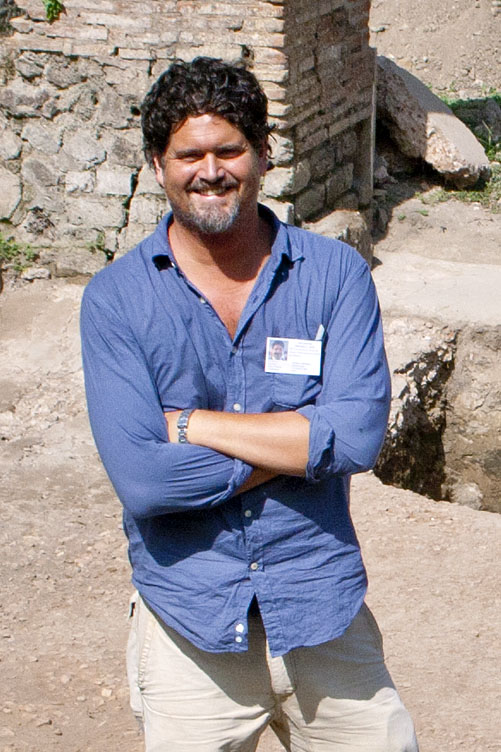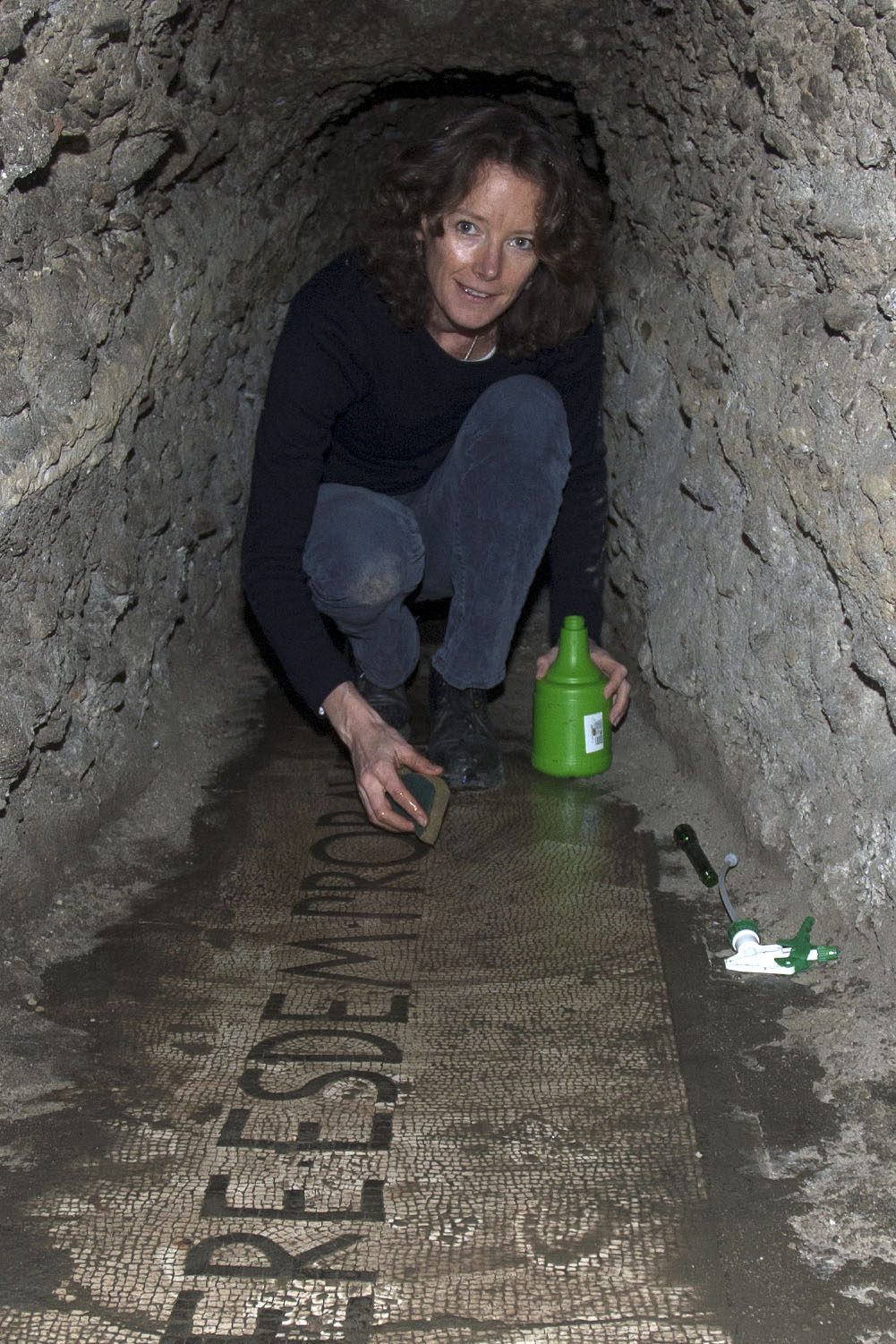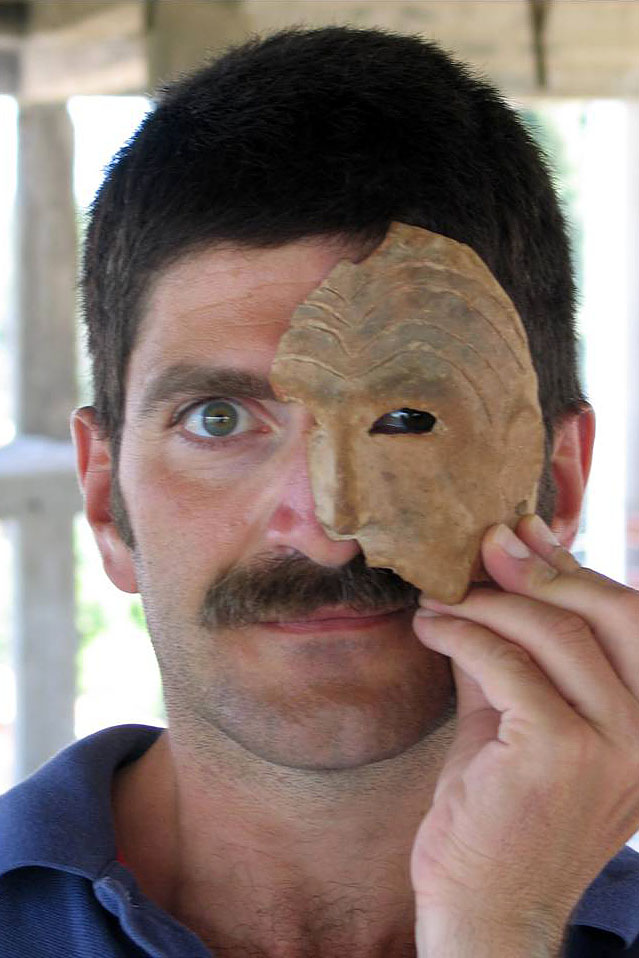Director
 |
Michael Thomas Director, Center for the Study of Ancient Italy Michael Thomas received his Ph.D. from the University of Texas at Austin. He has taught at UT Austin, Southern Methodist University, the University of Michigan, and held a Mellon Postdoctoral Fellowship at Tufts University. He currently serves on the advisory council for the Meadows Museum of Art in Dallas, the Scientific Committee of the FASTI Online, and the Board of Directors of the Etruscan Foundation. Thomas’s teaching and research focus on Etruscan and Roman Italy. He has excavated in Italy for 20 years, where he currently co-directs CSAI’s two Italian projects: the Oplontis Project in Torre Annunziata and the Mugello Valley Archaeological Project/Poggio Colla Field School in Tuscany. His publications include articles in the Journal of Roman Archaeology, the American Journal of Numismatics, Etruscan Studies, and the Memoirs of the American Academy in Rome. His books include a co-edited volume entitled Monumentality in Etruscan and Early Roman Architecture: Ideology and Innovation (2012) and a forthcoming book on architecture at Villa A at Oplontis. |
Faculty Executive Committee
 |
John Clarke Annie Laurie Howard Regents Professor in Fine Arts Professor Clarke received his Ph.D. from Yale University. In 1980 he began teaching at The University of Texas at Austin, where his teaching, research, and publications focus on ancient Roman art and archaeology, art-historical methodology, and contemporary art. Clarke has seven books and over 100 essays, articles, and reviews to his credit. The books include Roman Black-and-White Figural Mosaics (1979; rev. ed. 2006); The Houses of Roman Italy, 100 B.C.-A.D. 250: Ritual, Space, and Decoration (1991); Looking at Lovemaking: Constructions of Sexuality in Roman Art, 100 B.C.-A.D. 250 (1998); Art in the Lives of Ordinary Romans: Visual Representation and Non-elite Viewers in Italy, 100 B.C.-A.D. 315 (2003); Roman Sex, 100 B.C.-A.D. 250 (2003); Roman Life:100 BC-AD 200 (2007); and Looking at Laughter: Humor, Power, and Transgression in Roman Visual Culture, 100 B.C.-A.D. 250 (2007). He is co-director of the Oplontis Project. |
 |
Penelope Davies Associate Professor (Executive Committee President, 2012-13) Professor Davies earned her Ph.D. in Classical Archaeology from Yale University. Her work focuses primarily on public monuments of Rome and their propagandistic functions. Author of Death and the Emperor: Roman Imperial Funerary Monuments from Augustus to Marcus Aurelius and co-author of Janson’s History of Art, she is currently working on a book on the architecture of Republican Rome, to be published by Cambridge University Press. She is the recipient of fellowships from the American Philosophical Society, the American Council of Learned Societies, and the British School at Rome. |
 |
Nassos Papalexandrou Associate Professor Professor Papalexandrou received his Ph.D. from Princeton University focusing on the ritual dimensions of Early Greek figurative art. Prior to teaching at The University of Texas at Austin, he taught at the University of Michigan at Ann Arbor and spent the 2001-02 academic year as a research fellow at the Center for Hellenic Studies, Washington DC. His first book, The Visual Poetics of Power: Warriors, Youths, and Tripods in Early Greece was published in 2005. He is currently working on a second book that explores the role of monsters in the arts and rituals of Early Greece. A second project focuses on exhibit that will showcase antiquities exchanged as diplomatic gifts between Greece and the USA after WWII. He is currently involved in two projects that have to do with the archaeology of ancient Italy. One focuses on the translation/reception of the Greek tripod cauldron in Magna Graecia and Sicily in the Geometric, Archaic, and Classical periods. The other has to do with the importation and emulation of griffin cauldrons from the Aegean to Italy, especially Etruria, in the Archaic period. Papalexandrou offers undergraduate classes on various aspects of Greek Art and Archaeology (Myth in Images in Greek and Roman Antiquity, Art and Archaeology of Greek Sanctuaries, The Parthenon throughout the Ages, Visual Cultures of Cyprus, Crete, and Sicily). He also offers courses on the Art and Archaeology of the Ancient Near East. His graduate seminars explore various themes regarding the Art and Culture of Early Greece, the Eastern Mediterranean (11-6 centuries BCE), and the Near East (Orientalizing Phenomenon, Art as a Means of Communication in Preliterate Societies, Visual Cultures of the Ancient Near East). In the 90s Papalexandrou excavated a large public building of Cypro-Archaic date (ca. late 6th c. BCE) at Polis tis Chysochou (Marion), Cyprus and he is now involved in the publication of this unique find. He has published articles in scholarly journals such as Hesperia, American Journal of Archaeology, Hephaistos, and Journal of Modern Greek Studies. |




















